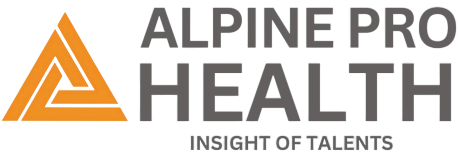Claim denials are among the most expensive and persistent challenges in the complex world of healthcare revenue cycle management. Beyond lost or delayed income, each denied claim drains administrative resources—resulting in rework, appeals, and growing frustration among patients and staff.
Shockingly, a large portion of denials stem from a single, preventable cause: insufficient eligibility and benefits verification. While coding errors or lack of medical necessity are also culprits, the foundation of denial prevention starts with verifying coverage.
Eligibility verification isn’t just a pre-registration checkbox—it’s the cornerstone of sustainable revenue cycle performance. By verifying insurance and understanding patient-specific benefits before services are rendered, healthcare providers can reduce risk, ensure proper reimbursement, and deliver a more transparent financial experience to patients.
This article explores why accurate eligibility verification is critical, the true cost of getting it wrong, best practices for improving your process, and how technology is modernizing this essential step.
Table of Contents
- The Expensive Price of Skimping on Eligibility Verification
- Why Eligibility Verification Is Your First Defense
- Key Challenges to Effective Verification
- Best Practices for Eligibility Verification
- Leveraging Technology to Improve the Process
- Conclusion
1. The Expensive Price of Skimping on Eligibility Verification
Inadequate eligibility and benefits verification has widespread consequences:
- Direct Financial Losses: Faulty insurance coverage data leads to claim denials and lost revenue. This contributes to bad debt, higher A/R days, and cash flow disruptions.
- Administrative Burden: Investigating denials takes time. Staff must gather documents, contact payers, and manage appeals—distracting them from higher-value tasks.
- Patient Confusion & Dissatisfaction: Miscommunication about coverage leads to surprise bills, damaging trust and your practice’s reputation.
- Delayed Care: Reimbursement issues can delay treatments or procedures, affecting patient outcomes and clinic efficiency.
- Audit Risks: Incorrect or incomplete eligibility data can raise red flags in payer audits, exposing your practice to penalties or recoupments.
Bottom line: Skimping on verification is costly. A proactive investment in robust eligibility checks protects your financial health and reputation.
2. Why Eligibility Verification Is Your First Line of Defense
Effective verification catches issues before they result in denial:
- Verifies Active Coverage: Ensures the patient has valid insurance at the time of service.
- Clarifies Patient Responsibility: Accurately identifies deductibles, copays, and coinsurance, enabling upfront collections or financial counseling.
- Flags Referral or Authorization Requirements: Catches missing prior approvals, a common reason for denials.
- Checks Service-Specific Coverage: Confirms the service is covered, avoiding out-of-pocket surprises for the patient.
- Avoids Out-of-Network Pitfalls: Ensures provider participation in the patient’s plan.
3. Key Challenges to Effective Verification
Despite its importance, verification is often hindered by:
- Plan Complexity: Each payer has unique processes and plan-specific rules.
- Inaccurate Patient Information: Patients often provide outdated or incomplete data.
- Coverage Interpretation Difficulties: Understanding exclusions, visit limits, and benefit tiers can be complex.
- Time Constraints: Limited time before the appointment may not allow for corrections or prior auths.
- Manual Methods: Relying on phone calls or logging into multiple payer portals is inefficient and error-prone.
4. Best Practices for Eligibility Verification
A strong, structured approach includes:
Start Early, Verify Often
- Begin at pre-registration or scheduling.
- Re-verify 48–72 hours before service to catch changes.
- Periodically re-check for chronic care patients.
Gather Comprehensive Information
- Full demographics, primary/secondary insurance details, policy and group numbers, and contact info.
Check Beyond “Active Coverage”
- Coverage dates
- Plan type (PPO, HMO, etc.)
- Deductibles, copays, coinsurance
- Service-specific coverage
- Prior auth/referral needs
- Provider’s in-network status
Document Everything
- Log date, method (phone/portal/EDI), representative’s name, and verification details.
- Save screenshots for audit readiness.
Offer Financial Counseling
- Share a breakdown of expected out-of-pocket costs.
- Discuss payment plans or financial aid.
- Have patients sign acknowledgment forms to prevent disputes.
5. Leveraging Technology for Better Verification
Modern tools turn this task from manual to proactive:
- Real-Time Eligibility Tools: Integrated with EHR/PM systems, these automate eligibility via EDI (270/271), delivering instant results.
- Automated Benefits Check: Extract detailed plan information, including specific service coverage, cost-sharing, and auth requirements.
- Workflow Integration: Sync verification data into scheduling, billing, and counseling workflows to eliminate manual entry.
- AI & Predictive Analytics: Identify patients at high risk of denial based on historical trends, enabling your team to prioritize accordingly.
6. Conclusion
Eligibility and benefits verification is no longer optional—it’s essential. While ensuring compliance is important, the true value lies in:
- Preventing claim denials
- Maintaining steady cash flow
- Reducing admin burden
- Enhancing patient satisfaction through transparency
By following best practices and leveraging intelligent technology, healthcare practices can stop denials at their source and create a more efficient, financially healthy workflow.
Claim denials are a persistent and costly problem. But many are avoidable with one simple strategy: robust, proactive eligibility verification. Don’t let small oversights undermine your entire revenue cycle. Invest in smarter workflows, better tools, and a culture of verification excellence to protect both your practice and your patients.




